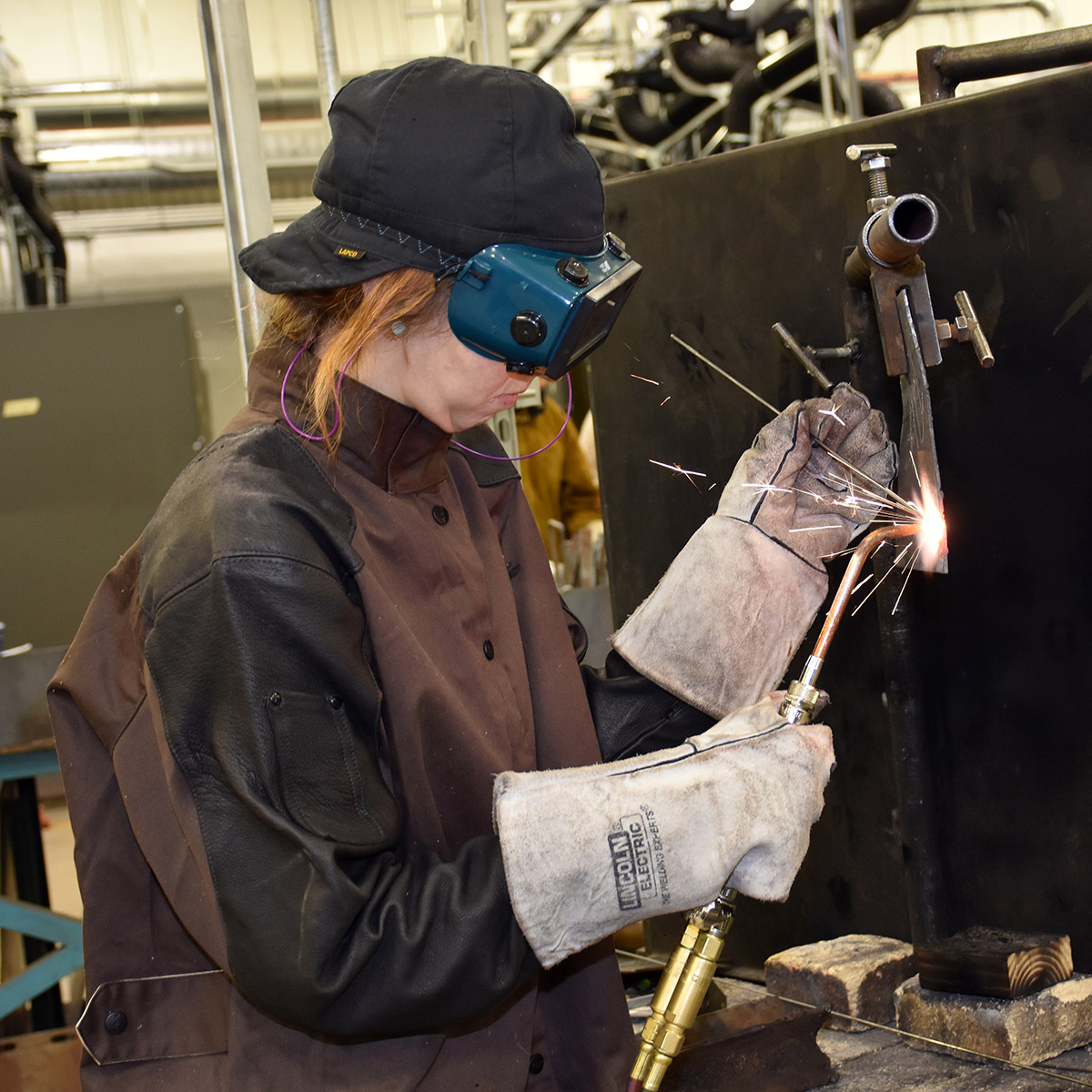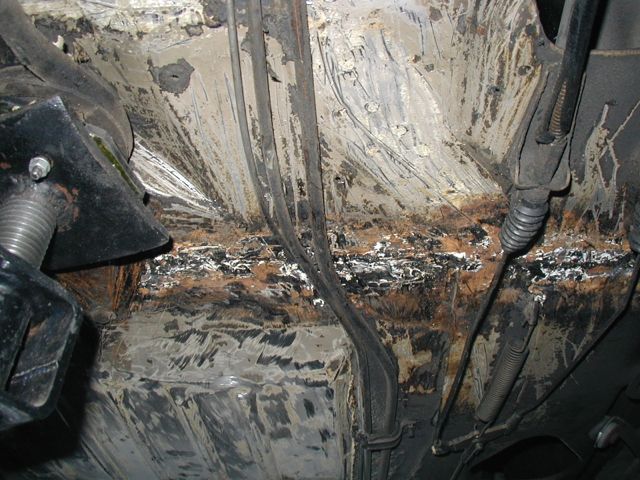Top welding issues and their fixes by Montana Mobile Welding and Repair Belgrade Fabrication
Common Welding Repair Service Issues and Exactly How to Address Them Effectively
Welding repair work commonly come across a variety of problems that can jeopardize the honesty of the final product. Common issues include poor penetration, porosity, and misalignment, to name a few. Each defect provides special difficulties that call for specific techniques for resolution. Understanding these concerns is necessary for welders intending to enhance their results and abilities. This conversation will check out these common welding repair problems and reliable methods to resolve them.
Inadequate Infiltration
Inadequate penetration happens when the weld metal stops working to totally fuse with the base material, resulting in weak joints and possible structural failings. This problem commonly comes from inadequate warm input, wrong electrode angle, or incorrect welding speed. Welders might come across poor penetration because of a mistake of the required specifications for a details material thickness or kind. In addition, contamination on the base product's surface can impede reliable bonding, exacerbating the problem. To deal with inadequate infiltration, welders must guarantee appropriate settings on their devices and preserve a clean work surface area. Normal evaluation of welds is recommended to determine any shortages early, permitting for prompt corrections and the avoidance of endangered structural stability in welded settings up.
Porosity
Porosity is an usual flaw in bonded joints that shows up as tiny gas bubbles caught within the weld steel. This problem can jeopardize the stability of the weld, resulting in reduced strength and potential failing under tension. Belgrade Welding. Porosity typically emerges from contamination, wetness, or inappropriate welding techniques, which allow gases to get away into the liquified weld swimming pool. To deal with porosity, welders should ensure correct surface preparation, keep a tidy functioning setting, and use appropriate welding specifications. In addition, picking the appropriate filler material and shielding gas can alleviate gas entrapment. Normal examination and testing of welds can assist recognize porosity early, ensuring prompt corrective actions are taken, thereby maintaining the high quality and integrity of the welded framework
Imbalance
Misalignment in welding can occur from various elements, consisting of improper arrangement and thermal expansion. Understanding the origin is important for efficient resolution. A number of modification techniques are offered to straighten parts and ensure structural integrity.
Reasons of Imbalance
Welding imbalance often stems from a variety of underlying issues that can endanger architectural stability. One main cause is inappropriate fit-up of components prior to welding, which can bring about spaces and unequal surface areas. Variants in thermal growth throughout the welding process can also result in distortion, especially if the materials being joined have different coefficients of expansion. Additionally, insufficient fixturing and securing might fall short to hold components securely in position, resulting in motion throughout welding. Improperly kept tools, including welding machines and devices, may introduce inconsistencies in the weld bead, more adding to imbalance. Operator error, stemming from not enough training or experience, can additionally play a significant role in creating misaligned welds.

Improvement Strategies Offered
Resolving misalignment efficiently requires a combination of corrective methods tailored to the certain problems at hand. One common method is making use of jigs or components to hold elements in the proper setting during welding, ensuring consistent placement. Furthermore, preheating the products can assist decrease distortion and enhance fit-up. For significant imbalance, mechanical adjustment techniques, such as using hydraulic jacks or clamps, can be utilized to correct the setting prior to welding. Post-weld warm treatment might likewise be required to soothe tensions triggered by misalignment. Ultimately, careful evaluation and modification throughout the configuration stage can prevent misalignment concerns from ending up being substantial problems, advertising a smoother welding procedure and enhancing general architectural stability.
Distortion
Distortion is an usual obstacle in welding that can emerge from numerous variables, consisting of unequal home heating and air conditioning. Comprehending the root causes of distortion is vital for carrying out reliable avoidance strategies. Addressing this issue not only improves structural honesty yet also improves the total quality of the weld.
Root causes of Distortion
When subjected to the extreme warm of welding, products frequently go through changes that can lead to distortion. This phenomenon mainly develops from thermal growth and tightening throughout the welding procedure. As the weld location warms up, the product broadens; upon cooling, it acquires, which can develop interior stresses. On top of that, unequal heating across a work surface can exacerbate these tensions, leading to warping or flexing. The kind of product also plays a significant role; steels with differing thermal conductivity and coefficients of growth may react in different ways, leading to unpredictable distortions. Moreover, inadequate joint layout and inadequate fixturing can add to misalignment during welding, increasing the possibility of distortion. Comprehending these reasons is important for efficient welding fixing and prevention methods.
Prevention Techniques
Efficient avoidance strategies for distortion throughout welding concentrate on regulating warmth input and making certain proper joint layout. Maintaining a regular heat input assists to decrease thermal expansion and tightening, which can bring about distortion. Making use of methods such as pre-heating the work surface can likewise minimize the temperature level slope, advertising consistent home heating. In addition, choosing proper joint layouts, such as T-joints or lap joints, can enhance stability and minimize stress concentrations. Executing correct fixturing to safeguard the workpieces in area additionally aids in keeping alignment during the welding process. Staggered welding sequences can distribute warmth more evenly, avoiding localized distortion. By applying these techniques, welders can significantly lower the possibility of distortion and improve the overall high quality of their welds.
Splitting
Cracking is a typical problem experienced in welding repair work, typically resulting from different elements such as incorrect cooling rates, material choice, or inadequate joint prep work. The incident of fractures can significantly compromise the honesty of the weld, resulting in possible failures throughout procedure. To address this concern, welders should first examine the origin, ensuring that products are compatible and appropriately selected for the specific application. Furthermore, controlling the air conditioning rate during the welding procedure is important; rapid air conditioning can cause stress and anxiety and bring about fracturing. Proper joint design and preparation also add to minimizing the risk. Executing these approaches can enhance weld high quality and longevity, eventually minimizing the chance of splitting in completed weldments.

Insufficient Blend
A considerable concern in welding fixings is insufficient blend, which happens when the weld metal does not properly bond with the base material or previous weld passes - Fabrication. This problem can bring about weaknesses in the joint, potentially jeopardizing the honesty of the welded structure. Aspects adding to incomplete blend consist of not enough warm input, inappropriate welding strategy, and contamination of the surfaces being signed up with. To resolve this issue effectively, welders get more info ought to ensure correct pre-weld cleaning and surface prep work, in addition to change their welding parameters to achieve sufficient penetration and combination. Regular examination during the welding procedure can likewise aid recognize incomplete fusion early, enabling for timely restorative actions to boost the general quality of the weld
Overheating
While welding repair services can improve architectural integrity, overheating provides a significant difficulty that can bring about product deterioration. Extreme warm throughout welding can modify the mechanical buildings of metals, causing reduced stamina, boosted brittleness, and warping. This sensation is particularly essential in high-stress applications where structural dependability is vital. Identifying getting too hot can entail aesthetic examinations for staining or distortion, as well as keeping an eye on temperature level throughout the welding process. To minimize the risks related to getting too hot, welders ought to utilize appropriate methods, such as managing warm input, changing traveling rate, and making use of suitable filler materials. In addition, carrying out pre- and post-weld heat treatments can help restore product residential or commercial properties and boost the general top quality of the repair, guaranteeing long-lasting performance and security.
Regularly Asked Concerns
What Are the Usual Indications of a Welding Defect?

How Can I Check My Welds for Quality?
To test welds for high quality, one can use aesthetic examinations, ultrasonic testing, and radiographic techniques. Each technique ensures architectural stability, recognizes issues, and verifies adherence to defined standards, ultimately boosting the dependability of the bonded joints.
What Safety and security Preventative Measures Should I Take While Welding?
When welding, one must prioritize safety by putting on proper individual protective devices, ensuring proper ventilation, safeguarding combustible products away, maintaining a tidy work area, and understanding environments to stop mishaps and injuries.
Can I Repair a Weld Without Redoing the Entire Joint?
Repairing a weld without redoing the whole joint is possible, depending on the damage (Montana Mobile Welding and Repair Belgrade Welding). Strategies such as grinding, including filler product, or utilizing a welding procedure can properly deal with certain imperfections while maintaining the surrounding framework
What Devices Are Necessary for Efficient Welding Repairs?
Important tools for effective welding repairs include a welding equipment, cord brush, mill, safety gear, clamps, and filler products. Each device plays an essential role in making sure high quality and safety during the fixing process. Porosity usually emerges from contamination, moisture, or inappropriate welding strategies, which permit gases to escape right into the molten weld swimming pool. Badly kept equipment, including welding machines and tools, may present inconsistencies in the weld bead, additional adding to misalignment. When subjected to the extreme warmth of welding, materials frequently go through modifications that can lead to distortion. Breaking is a common concern experienced in welding repair work, usually resulting from various elements such as inappropriate air conditioning prices, material choice, or poor joint preparation. A considerable concern in welding repair work is incomplete combination, which takes place when the weld metal does not effectively bond with the base material or previous weld passes.